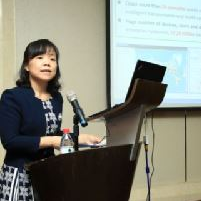Quantum Cryptography and Encryption
A special issue of Mathematics (ISSN 2227-7390). This special issue belongs to the section "Computational and Applied Mathematics".
Deadline for manuscript submissions: closed (30 April 2024) | Viewed by 3470

Special Issue Editors
Interests: quantum cryptography; quantum key distribution; discrete variable; information processing
Special Issues, Collections and Topics in MDPI journals
Interests: quantum key distribution; quantum random number generation; quantum information theory
Special Issues, Collections and Topics in MDPI journals
Special Issue Information
Dear Colleagues,
Quantum cryptography and encryption is one of most popular research domains in recent decades. Researchers from multiple disciplines, such as physics, mathematics, computer science, electronics, etc., have worked together to bring up fruitful achievements. Nowadays, theoretical and experimental efforts are focused in many directions: extending the maximum distance of key distribution, increasing the final key rate in terms of both photonic layer and post-processing layer, developing new protocols suitable for a future quantum network, etc.
The purpose of this Special Issue is to gather a collection of articles reflecting the latest developments of quantum cryptography theories and applications. We invite researchers to submit their theoretical or experimental contributions on topics including, but not limited to: quantum key distribution, quantum networking, quantum direct communication, quantum hacking and countermeasure, and quantum random number generation.
Prof. Dr. Qiong Li
Dr. Ziyang Chen
Guest Editors
Manuscript Submission Information
Manuscripts should be submitted online at www.mdpi.com by registering and logging in to this website. Once you are registered, click here to go to the submission form. Manuscripts can be submitted until the deadline. All submissions that pass pre-check are peer-reviewed. Accepted papers will be published continuously in the journal (as soon as accepted) and will be listed together on the special issue website. Research articles, review articles as well as short communications are invited. For planned papers, a title and short abstract (about 100 words) can be sent to the Editorial Office for announcement on this website.
Submitted manuscripts should not have been published previously, nor be under consideration for publication elsewhere (except conference proceedings papers). All manuscripts are thoroughly refereed through a single-blind peer-review process. A guide for authors and other relevant information for submission of manuscripts is available on the Instructions for Authors page. Mathematics is an international peer-reviewed open access semimonthly journal published by MDPI.
Please visit the Instructions for Authors page before submitting a manuscript. The Article Processing Charge (APC) for publication in this open access journal is 2600 CHF (Swiss Francs). Submitted papers should be well formatted and use good English. Authors may use MDPI's English editing service prior to publication or during author revisions.
Keywords
- quantum key distribution
- quantum networking
- quantum direct communication
- quantum hacking and countermeasure
- quantum random number generation
- quantum encryption algorithm
- quantum secret sharing
- post quantum cryptography






